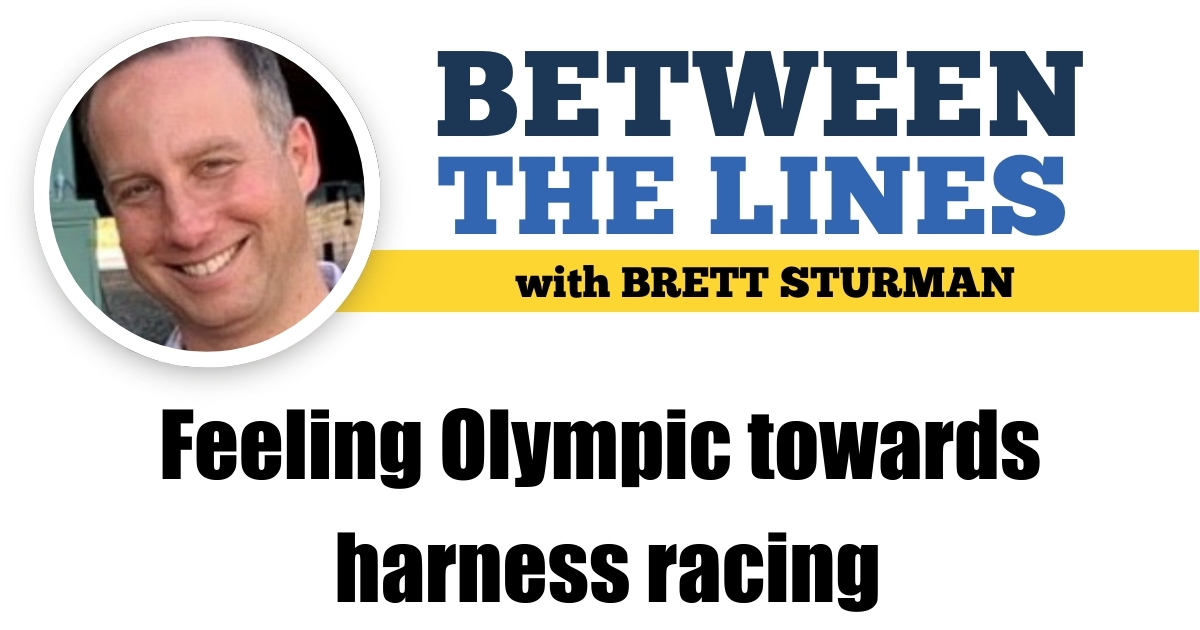Feeling Olympic towards harness racing
What if there was a truly international racing event that pitted the best standardbreds from different countries against each other every few years in a variety of gaits and ages for both genders?
by Brett Sturman
With the conclusion of this year’s Summer Olympics, and the spirit that world competition in any sport brings out, I wondered what harness racing on a true international stage could look like. Short of resurrecting the now built-over Hollywood Park as a racing strip for the 2028 summer games in Los Angeles, could there be a viable way to form international harness racing competition on something less than the Olympic stage?
The closest multi-day event existing today that comes to mind is the World Driving Championship (WDC) held every two years, most recently in Germany, The Netherlands and Belgium in 2023. But the WDC is a competition to determine the best driver, not the best horses. Nothing against driver challenges either abroad or here in the U.S., but these challenges have the feel of an exhibition and whoever wins are often a function of the quality of horses that were driven.
What about a competition based on the actual horses?
The Yonkers International Trot, re-established in 2015 after a hiatus for 20 years, is successful in bringing together top trotters from around the world for a single race each year. Winners of the race in recent years have come out of the U.S., Norway, Italy and Sweden. I know there’s an incredible amount of logistics needed just to make this single race happen, but technicalities aside, could the model be replicated to bring in horses across other gaits and divisions?
What’s being described is essentially what the Breeders’ Cup World Championships in thoroughbred racing achieves. Unlike harness racing’s Breeders Crown where, if we’re lucky, we will have a special European entry or two, max, the thoroughbred championships have a true international flair. It’s always fascinating to see how the races play out when horses from worlds apart face each other.
I think something similar in harness racing would have tremendous appeal. This type of enthusiasm for competition that includes international entries can be seen each year in Sweden’s Elitloppet. Also, in a more distant, one-off example, international competition in the March of Dimes Trot led to that race going down in harness history lore.
In a modern scenario, perhaps the best way to structure such a competition would be to mirror what golf does in the Ryder Cup. That event pits the U.S. against Europe, what harness racing could do is team up U.S. and Canada to take on the rest of the world. This way, countries with much smaller horse populations that still have a star such as the Irish-bred Oakwood Ardan IR, would still have representation.
Similarly, horses already racing in the U.S. would race and represent a team based on their origin of foal. Jiggy Jog S, for example, has been dominating in the mare trotting ranks for a couple of years now. She’d race as part of the world team having been foaled in Sweden. Imagine all of these Swedish-bred trotters trained by Svanstedt combined with the best France and Italy have to offer going against the best domestically that Takter and Burke and others campaign.
Again, understanding the logistical complexities, maybe it’s something that comes together just every two years like the WDC, or even every four years such as the Olympics. And, more so than the WDC or even the Olympics, there could be lasting implications for whichever horses perform best in these races. As breeding becomes more globalized, the races could serve as true “sire making” events. There could be worldwide commercial appeal from a breeding standpoint for horses that prove better than not only their local rivals but also against their international counterparts.
To even qualify for these “Olympics” would be events in themselves. Already conducted stakes events throughout the span of a year could also serve to accumulate qualifying points towards the international competition. From a fan standpoint, seeing horses race to advance to even higher-quality racing has more appeal than seeing them race in some lesser enthusiastic stakes purely for large purses with little handle.
It’s an interesting dynamic because while harness racing has far less appeal to the general population in the U.S., that is not the case at all abroad where there is mass appeal, and the races are well supported. At the same time, however, the breed here in North America has never been faster. Could the buzz created by co-mingling all the racing interests from around the world spill over and inject broader public interest to racing here?
Ultimately, the competition would seek to answer the question of which country has the best horses. Would European trotters prove superior when going head-to-head against American-bred ones? With similar breeding but different training methods, would North American pacers beat the best that Australia and New Zealand have to offer? Would there be differences in performance across 3-year-olds and older horses, between colts and fillies? It would be extremely compelling to find out.

















